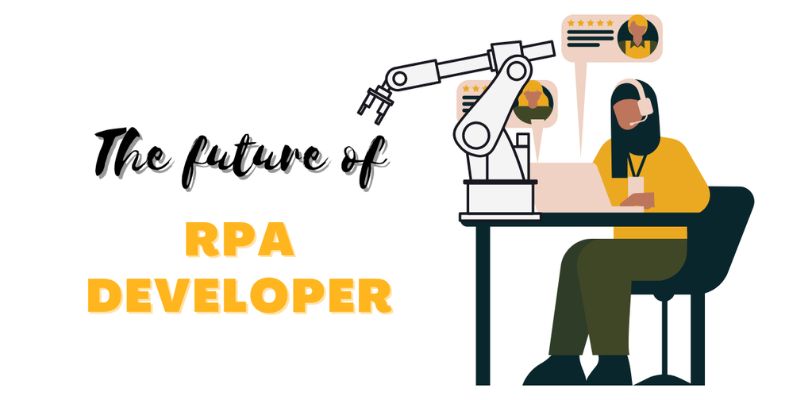Embarking on the journey of Developing and deploying a successful RPA strategy? Get ready because I’m spilling the perfect mix of knowledge and street-smart strategies to turn your automation dreams into reality. Think it’s a tech-only battleground? Think again. It’s more about the smarts—the plans and decisions that shape the future of your business. Whether you’re starting fresh or tuning up your RPA game, I’ve charted out the roadmap that guides you from the groundwork to triumph. So buckle up! Let’s dive into the how-to’s of RPA success and gear up your business for uninterrupted, automation excellence.
Laying the Groundwork for RPA Success
Establishing a Comprehensive RPA Implementation Plan
Planning for robotic process automation is like mapping a treasure hunt. You must know where to start, what paths to take, and what traps to avoid. Kicking off with a solid RPA implementation plan is key. First, find the best process to automate. Ask, which tasks are time-eaters but critical? Your answer decides your starting point. Then, draw a clear map of this process. Include every step it takes right now. You’ve got your base. Now, plan how your robots will take on these tasks. Lay out who in your team does what. Set dates for each phase: planning, testing, going live.
Next, think about the RPA project strategy. What goals do you want to hit? How will you know you’re on track? Jot down these goals and track them. This way, your robots won’t stray off the path. Along the journey, teach your team about RPA. They’re the ones who’ll work with the robots. So, make RPA training programs a big part of your plan.
For the RPA adoption process to work, you need all hands on deck. Include folks from various teams – IT, operations, and the front line. They will offer insights you alone might miss. Plus, a cross-functional RPA team fosters company-wide support.
Scaling RPA solutions is next. Remember, what starts small may grow huge. So, think big from day one. Will these robots work well when you’re bigger, busier? Plan for growth, and adjust as you scale.
Lastly, good RPA governance keeps everything in check. Set rules about how to use RPA and what the limits are. This avoids trouble down the road. Include RPA security protocols and RPA compliance and standards.
Conducting a Robust Cost-Benefit Analysis for RPA
To get the green light for RPA, you must prove its worth. That’s where cost-benefit analysis RPA comes in. How? First, list every cost. Think of software, training, and maybe even hiring. Then, forecast the benefits. Will the robots save time? Will they cut down errors? Calculate how much money this saves you.
But, look beyond just cash. How about happier customers because they get faster service? Or workers freed up to do more interesting jobs? These perks count too.
Remember, this isn’t guesswork – it’s like math homework. Be sure in your numbers. Precision builds trust. If you say “We’ll save 100 hours a month,” people listen. They see potential in your plan.
Now, setting up RPA isn’t free of hurdles, and it isn’t done overnight. It’s a long-term game with wins at each milestone. But done right, the perks of RPA boost your business in ways you’ll see and ways you didn’t even expect. It’s about finding the rough spots in your workflow and smoothing them out with the help of robots. It’s about letting robots do the dull stuff while your people tackle the brain teasers. In the end, your RPA journey should lead to a happier team, slicker operations, and some solid savings. That’s RPA business impact at its best.
Building the Foundation: RPA Project Planning and Governance
Designing an Effective RPA Project Strategy
Start smart with a solid RPA project plan. This means thinking about your goals. Ask yourself, “What do I want to achieve?” Your answer will guide your RPA journey. A good RPA strategy keeps things clear and focused. For success, start with a goal and make a roadmap. Your roadmap is your guide from start to finish.
A clear plan includes choosing which tasks robots should do. Not all tasks are right for RPA. Pick tasks that are simple and repeat often. This prep helps a lot later on. Good choices at the start mean fewer hiccups later.
Next, do a reality check on your costs and benefits. This helps you see the value of RPA for your business. Get your numbers right to stay on track. A good plan watches cash flow and looks for true value.
Finally, plan for who’s in charge and how to check your progress. Assign a team to lead the way. Regular check-ups keep your project healthy and thriving. Your plan needs strong leaders and smart checks to stay strong.
Setting Up Strong RPA Governance and Change Management Frameworks
Strong rules and a good change plan are key. These keep your RPA program on the right track. First, let’s talk about RPA governance. It’s the set of rules that manage your RPA’s life. Always keep your RPA safe and in check. That means setting up security rules and making sure they’re followed. Being careful with how you handle data keeps trouble away.
Now, what about change?
A good change plan is a must-have. People fear change, so you need to help them adapt. Show your team RPA’s value. Explain how it makes work easier and better. A change plan has clear steps to help people accept new robots as helpers.
What’s next after setting rules and planning for change? You train your people. Give them the skills to work with new robot partners. Training means passing on knowledge, from experts to your team. Good training turns fear into excitement and skills.
Putting it all together, your roadmap for RPA needs careful thought, clear goals, smart money choices, good leadership, firm rules, smooth change, and solid training. With these steps in place, your RPA plan will be strong. It’ll guide you to a future where robots and humans work better, together. And that’s a win for everyone.
The Technical Journey: RPA Development and Vendor Selection
Selecting the Right RPA Tools and Vendors
When you plan to bring robots into your business, you start with the tools and vendors. Think of it like picking out the right helpers for your team. You want the best ones, right? So, here’s what you do: list down your tasks, decide which ones robots can do, and then find the top tools and folks who make these robots.
The tools should be easy to use and work well with your current systems. Robotic Process Automation, or RPA, isn’t about making things hard. It’s about making them smooth and easy. And don’t forget, you’re not alone in this! More and more businesses want robots to help out. They can share what they learned with you.
Now, checking if the tools are good ahead of time is key. You need to see if they can handle more work as your company grows. Plus, if you ever need a hand, you want to be sure the vendor will help fast. So, talk to others who have used these tools, read reviews, and meet with the vendors. Then, you can pick the sharp tools that will help your business the most.
Crafting a Scalable RPA Technical Architecture
After choosing tools comes the next big step—making a strong and growing robot plan or RPA technical architecture. Think of it like building a strong treehouse that can grow with more rooms as needed.
Your RPA plan has to be solid so it can handle lots of different tasks. It should be like a good backpack, where you can pack more as your trips get bigger. Also, it has to play nice with all the other tech stuff you have. And very important, it must follow the rules, like keeping data safe and private.
Remember those robot helpers? They need to be smart from the start. They should be able to learn and get better at their jobs. Plus, it’s not just about having robots work for you. Your team should learn how to work with them too. This way, you all grow together.
So, when you’re making your robot plan, sit down with your tech friends. Figure out how to start small with a few robot helpers and then add more as you all get better. And let’s not forget: you need to keep an eye on the robots. Make sure they’re doing a great job and getting better.
To make all of this work, you’ll need your whole team on board. That’s where a RPA center of excellence comes in. This is a group of people in your company who know robots inside out. They make sure everyone knows what’s going on and are excited about the robots. They also make sure everyone’s playing by the rules and the robots are working as they should. It’s teamwork that makes the dream work!
And that’s it! As you keep an eye on your robot helpers, they’ll start doing more and more. Your business will be faster, smarter, and ready for tomorrow. Let’s move forward and make those robots work for you!
From Pilot to Performance: Deploying and Optimizing RPA
Executing an Efficient RPA Deployment through Pilot Programs
Let’s talk about how to roll out RPA smoothly. Starting small is key. We call this a pilot program. It’s like a test run for your main event. Think of it as a mini version of your big plan. It must have clear goals and a set timeline. This first step proves the worth of RPA to those who doubt.
First, choose a process that’s easy to fix. This process should be one robots can do well. Make sure to watch how things go. Solving problems early helps a lot. The results will guide your next steps. They show if your plan could work full-scale. This is how you turn a good idea into real gains.
Monitoring, Optimizing, and Scaling RPA Solutions Post-Deployment
After the pilot, it’s time to think bigger. But be smart about growing your RPA use. Track how your robots work. Are they fast? Accurate? Do they help people do less dull work? You need this info to make smart choices later on.
Then talk about what could be better. Maybe there’s a step robots could do faster. Or a way they could do less wrong. You’ll want to fix these things. This makes sure your RPA keeps getting better.
Next, grow your RPA to more places. But don’t rush. Add more robots one step at a time. Check that each new step works well. This way, expanding brings more good than trouble.
Keep in mind, too, that your team needs to learn how to work with RPA. Teaching them is worth it. They’ll use RPA better and find new ways it can help.
Last, make sure you’ve got rules to play by. Call it governance. It keeps your RPA road safe and clear. It makes sure all your RPA work follows the law. It helps stop mess-ups before they happen.
Your RPA can do great things if you lead it well. When you manage it right, it can save money and time. It also frees up your team to think and create. They won’t be stuck doing the same old boring tasks. Use these tips to help your RPA reach its full power.
In this blog, we walked through the steps to make RPA work well for you. We looked at how crucial a good plan is and the need to figure out if the cost is worth it. We shared how to lay strong plans, pick tools, and set rules for your RPA project.
Remember, the key to RPA success lies in careful planning, smart choices, and ongoing checks. It begins with a strong ground plan, builds through picking the best tools, and ends with keeping an eye on your RPA and making it better as you go.
So, dive into RPA with these guides in hand. You’re set to see real gains and make your work smoother! Let’s make your tech journey count.
Q&A :
What are the key steps in developing a successful RPA (Robotic Process Automation) strategy?
Developing a successful RPA strategy requires a comprehensive approach. Start by identifying and evaluating the processes that are the best candidates for automation. Prioritize these based on potential return on investment and ease of implementation. Next, you’ll need to secure executive sponsorship and gather a cross-functional team. Establish a clear governance model, and define your objectives and KPIs. Finally, focus on change management to ensure the workforce is prepared and on board with the RPA initiatives.
How do you measure the success of an RPA deployment?
Measuring the success of an RPA deployment involves monitoring key performance indicators (KPIs) such as cost savings, productivity improvements, accuracy rates, and compliance metrics. Also, consider the impact on employee satisfaction and customer experience. Set baseline metrics before deployment and track progress over time to assess the value and effectiveness of your RPA strategy.
What are common challenges when deploying RPA, and how can they be overcome?
Common challenges when deploying RPA include selecting the wrong processes for automation, underestimating the complexity of the process, resistance to change from staff, and scaling the solution. These challenges can be overcome by conducting thorough process assessments, ensuring strong change management and communication strategies, providing adequate training, and setting up a Center of Excellence to manage and scale the RPA program.
What role does process selection play in the success of an RPA strategy?
Process selection is critical in the success of an RPA strategy because choosing the right processes for automation can significantly impact the ROI and overall effectiveness of the initiative. Processes that are rule-based, high-volume, and prone to human error are generally good candidates. Conducting a meticulous process discovery and analysis phase is essential to ensuring that the RPA strategy delivers the desired outcomes.
How can an organization ensure their RPA strategy is scalable for future growth?
To ensure scalability, organizations should design their RPA strategy with growth in mind from the outset. This means adopting a modular approach to automation, building a strong RPA governance framework, and fostering a culture of continuous improvement. Additionally, organizations should invest in an RPA platform that can easily integrate with other technologies and choose scalable infrastructure to accommodate increasing automation workloads. Engaging in regular reviews and updates to the RPA strategy will also help align it with evolving business goals and technological advancements.






